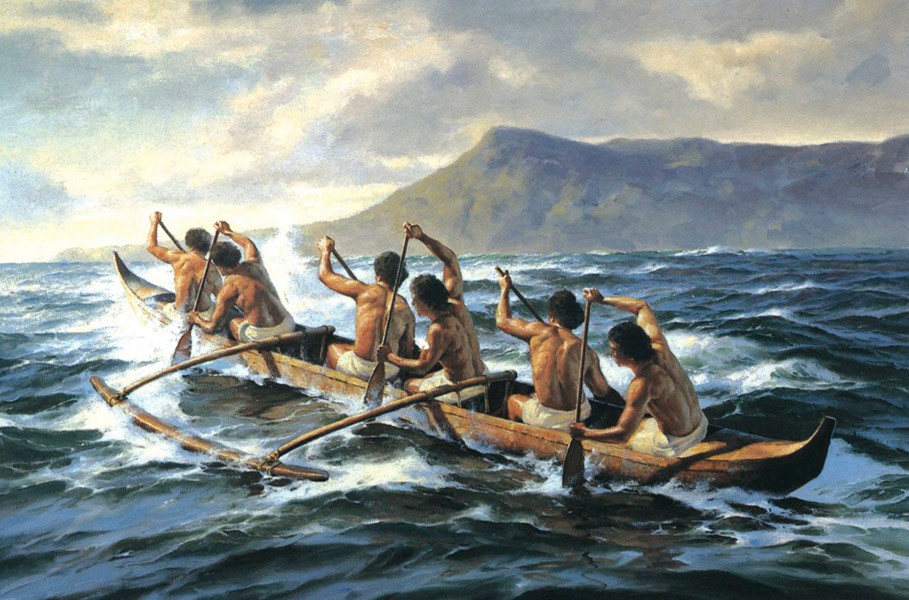
To listen to this reflection as a podcast, click here.
Wayne Cordeiro, founding pastor of the New Hope Christian Fellowship in Honolulu, was once invited to compete in a traditional Hawaiian canoe race.
The wa’a is a large, ocean-going canoe that features a balancing arm and seats six paddlers. As Cordeiro puts it, “Although navigating one of these ancient canoes may look basic, the technique required is much more than meets the eye.”
Wayne and five church friends wanted to win the race, despite the fact that none of them had any experience paddling a wa’a. Therefore they hired out a local canoe instructor.
“OK, everyone!” yelled the coach. “This is how you hold a paddle.” Everybody managed to put the blade and not the handle into the water. “Let’s go paddle our first stretch of water. It will be an eighth of a mile sprint. When I begin the stopwatch and say Go, just paddle as fast and hard as you can. I’ll let you know when to stop paddling. Got it?”
How hard can this be? thought Wayne and his friends. They were ready to impress the coach.
As soon as he yelled, “Go!” they jammed their paddles into the water and began to pull. The canoe lumbered out of its dead-in-the-water starting position like a drowning elephant gasping for air. No one knew when to switch the paddle from one side of the boat to the other. They all assumed that each person ought to switch when his own arm got tired.
Firing at will, Wayne whipped the blade of his paddle right across the bare back of his friend sitting directly in front of him.
“That’s going to leave a mark,” he observed – but everyone was far too exhausted to do anything but grunt.
After what seemed an eternity, the coach yelled, “Stop!” He looked at his watch. The canoe had traveled one eighth of a mile in one minute, 42 seconds. “That,” said the coach, “is mighty sad.”
The men caught their breath, apologized for the scrapes and wounds they had inflicted on each other, and then listened as the instructor taught them how to paddle as a team. Each paddler was to mirror the actions of the one in front of him. Everyone would move in rhythm with the lead stroker, switching sides when he switched sides.
“OK,” said the coach, “let’s try that same eighth of a mile stretch again. This time, stroke as if you were on a leisurely stroll through the park. No sprinting. Just imitate the one in front of you.”
This time the paddles entered the water silently. The canoe went forward smoothly. Everyone was surprised how soon the coach called out, “Stop!” He looked at his watch and said, “You just beat your first time by 24 seconds.”
What most surprised Cordeiro was that no one had become exhausted, and no one had gotten hurt. The lessons he learned that day in the wa’a have become his favorite illustration of partnership.
It’s possible that we’re living in the most individualistic, who-gives-a-rip-about-partnership culture in human history. Hollywood loves the Lone Hero: Clint Eastwood clearing out a Western town by himself; Bruce Willis neutralizing a band of terrorists by himself; Arnold Schwarzenegger taking over a small country by himself.
CEOs, coaches, business owners, presidents, and pastors have embraced the absurd idea that a real leader is someone who excels at accomplishing 25 jobs – all by himself or herself.
What if leadership were measured instead by our ability to help 24 other people each excel at one of those jobs, and learn how not to become exhausted or hurt each other in the process?
We are not ourselves by ourselves.
As Paul says concerning Jesus in Ephesians 4:16: “From him the whole body, joined and held together by every supporting ligament, grows and builds itself up in love, as each part does its work.”
Today, whether you’re holding a paddle, a pencil, or a paintbrush, partnership is the way to go.
